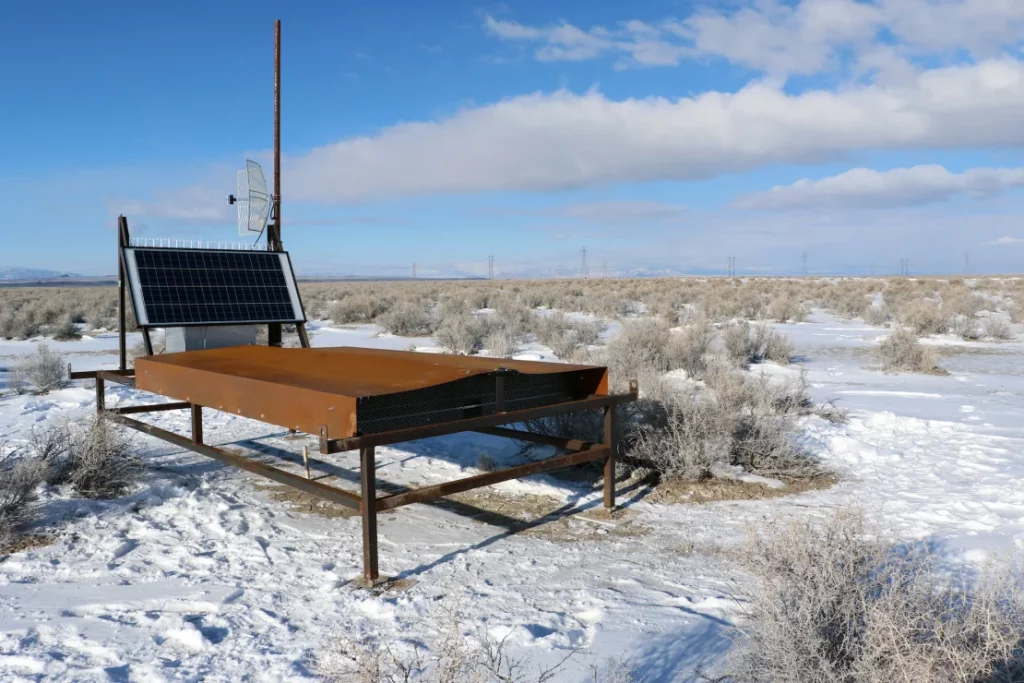Scientists studying the mysterious beginnings of potent cosmic rays have identified an uncommon ultra-high-energy particle. They propose that this particle journeyed to Earth from a location beyond the Milky Way galaxy.
As detailed in a recent publication in the journal Science on Thursday, the energy carried by this subatomic particle, invisible to the human eye, is likened to the impact of dropping a brick on your toe from waist height. The research suggests that this particle rivals the most energetic cosmic ray ever observed, known as the “Oh-My-God” particle, identified in 1991.
Cosmic rays, comprising charged particles, continuously traverse space and shower the Earth. While low-energy cosmic rays can originate from the sun, the exceedingly high-energy ones are extraordinary and believed to travel vast distances from other galaxies and extragalactic sources.
According to John Matthews, a research professor at the University of Utah and coauthor of the study, low-energy cosmic rays pass through the palm of your hand every second if you extend it. However, the occurrence of high-energy cosmic rays is more like one per square kilometer per century, making it highly improbable for them to traverse a human hand.

Despite extensive research spanning years, the precise origins of these high-energy particles remain elusive. They are presumed to be associated with the universe’s most energetic phenomena, such as those involving black holes, gamma-ray bursts, and active galactic nuclei. However, the most powerful ones discovered to date seem to emanate from voids or spaces where no violent celestial events have occurred.
Tracking high-energy cosmic rays
The recently identified particle, affectionately dubbed the Amaterasu particle after the sun goddess in Japanese mythology, was sighted by the Telescope Array, a cosmic ray observatory in Utah’s West Desert.
Since 2008, the Telescope Array comprises 507 surface detectors, each the size of a ping-pong table, spread across 700 square kilometers (270 square miles). Despite observing over 30 ultra-high-energy cosmic rays, none matched the magnitude of the Amaterasu particle, which interacted with the Earth’s atmosphere above Utah on May 27, 2021. The resulting secondary particles rained down to the ground, where they were captured by the detectors, as outlined in the study.
Also Read Report: Potential $20M Offer to Attract Primary Opponent for Tlaib – Alleged Donor Involvement
Analyzing the data involves assessing the number of particles hitting each detector, providing insights into the primary cosmic ray’s energy, as explained by John Matthews. The event activated 23 surface detectors, indicating an estimated energy of approximately 244 extra-electron volts. In comparison, the famous “Oh My God particle” was identified over three decades ago and registered at 320 exa-electron volts.
In perspective, 1 exa-electron volt equals 1 billion gigaelectron volts, and 1 gigaelectron volt equals 1 billion electron volts. This makes the Amaterasu particle an astounding 244,000,000,000,000,000,000 electron volts. In contrast, according to NASA, the typical energy of an electron in the polar aurora is 40,000 electron volts.

An ultra-high-energy cosmic ray carries energy levels tens of millions of times greater than those produced by any human-made particle accelerator, including the Large Hadron Collider, the most potent accelerator ever constructed, clarified Glennys Farrar, a physics professor at New York University.
Farrar, who was not part of the study, conveyed via email, “What is needed is an area with extremely high magnetic fields—similar to a super-sized LHC, but occurring naturally. The necessary conditions are exceptional, making the sources extremely rare, and the particles disperse into the vast universe, minimizing the likelihood of one reaching Earth.”
While the Earth’s atmosphere largely shields humans from harmful effects caused by these particles, occasional computer glitches can result from cosmic rays. However, the particles, along with space radiation in general, present a more significant threat to astronauts, with the potential to induce structural damage to DNA and alter various cellular processes, as noted by NASA.
Mysterious source
The origin of these ultra-high-energy particles remains a puzzle for scientists.
John Matthews, a co-spokesman for the Telescope Array Collaboration, noted that the two most significant recorded cosmic rays seem to have “random” origins. When their paths are retraced, there appears to be no source of high energy capable of producing such particles. Specifically, the Amaterasu particle seems to have originated from the Local Void, an empty region of space adjacent to the Milky Way galaxy.
“If you take the two highest-energy events—the one that we just found, the ‘Oh-My-God’ particle—those don’t even seem to point to anything. It should be something relatively close. Astronomers with visible telescopes can’t see anything huge and violent,” explained Matthews. “It comes from a region that looks like a local space. It’s a void. So what the heck’s going on?”
Potential answers might emerge with the expansion of the Telescope Array. Upon completion, 500 new detectors will enable the array to capture particle showers induced by cosmic rays across 2,900 square kilometers (about 1,120 square miles)—an area nearly the size of Rhode Island, according to the University of Utah statement.

